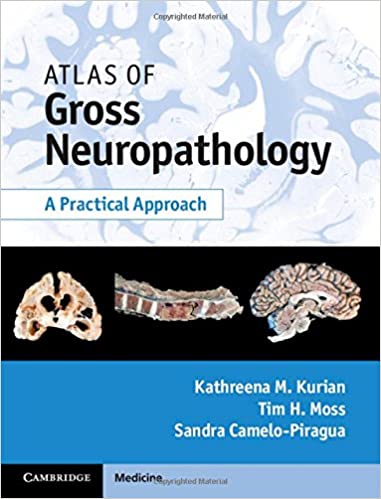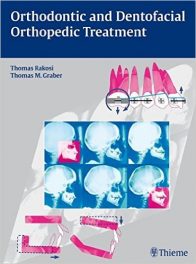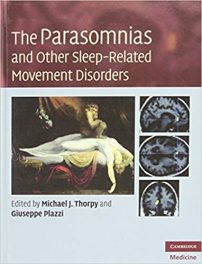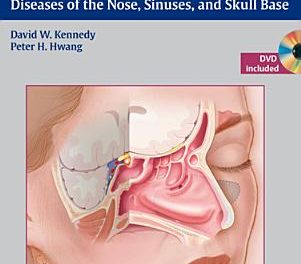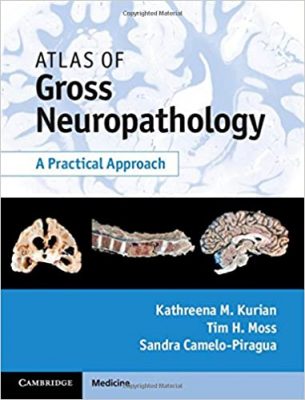 Authors: Kathreena M. Kurian, Tim H. Moss, and Sandra Camelo-Piragua
Authors: Kathreena M. Kurian, Tim H. Moss, and Sandra Camelo-Piragua
Publisher: Cambridge University Press – 234 pages
Book Review by: Nano Khilnani
Galen (129 AD – 200 / 216 AD), commonly known as the ‘Father of Medicine’, and the first known physician, was also the first pathologist because he dissected the cadavers of monkeys whom he believed had internal organs similar to humans. At that time, the ruling authorities strictly prohibited the dissection of human bodies. Galen therefore advised his students to examine the bodies of Roman gladiators who were killed.
He was known also for his ‘squealing pig experiment’ whereby he would cut open a pig, and while it was squealing he would cut the nerve, or vocal cords, showing they controlled the making of sound.
It has been presumed (not verified) among people in medical circles that that was how the study of neuropathology began. True or not, neuropathology has been in existence for nearly two thousand years. This book, as its title above reads, takes a practical approach to this medical discipline.
Accordingly, when you browse through this rather slim handbook of just over 200 pages (as we did) you will find an amazing number of full-color brain and nerve images with detailed descriptions of the conditions explanations at the bottom of each image. We counted 420 images! Divide that by the total number of this book’s pages, and you come up with an average of nearly two images per page (420 images divided by 234 pages = 1.80 images).
- Pathological reaction to disease
- Developmental and perinatal disorders
- Perinatal pathology
- Malformations
- Vascular disease
- Vascular malformations
- Trauma
- Blunt head injury
- Penetrating (missile) injury
- Infection
- Bacteria
- Viruses
- Fungi
- Parasites
- White matter disease
- Demyelination
- Demyelination / Leukodystrophies
- Metabolic disorders
- Acquired metabolic disorders
- Inherited metabolic disorders
- Phakomatoses
- Neurodegenerative disease
- Movement disorders
- Dementias
- Tumors
- Spine and spinal cord
- Spinal column
- Spinal cord
- Cysts and miscellaneous lesions
This book is indeed a practical guide to gross neuropathology with clear anatomical descriptions provided at the bottom of the images, and the physiological conditions therein.
Note to Readers:
The purchase of this book comes with fully searchable online access to the text and images from your book.
To set up your Cambridge Books Online account:
- Visit http;//Cambridge.org/register and click ‘Register’
- Enter your details and hit ‘Submit’
- You will receive a confirmation email – please follow the instructions in this mail to activate your registration.
How to activate your access code using your Cambridge Books Online account
- Scratch off your Activation Code (found on the inside front cover of your book)
- Visit http;//Cambridge.org and click ‘Login’, followed by ‘User Login’
- Login using your Cambridge Books Online account
- Click on ‘My Bookshelf’
- Enter your Activation Code into the box provided and click ‘Activate Now’
- Click on the book title to view the book’s content
Please note that this book cannot be returned once the access code has been revealed.
For technical assistance, please see http://ebooks.Cambridge.org/contact.jsf
Further information about using and navigating your online access may be found on the online ‘User Guide’ once you have activated your code.
Authors:
Kathreena M. Kurian is Senior Clinical Lecturer and Clinical Neuropathologist in the Institute of Clinical Neurosciences at the University of Bristol and Frenchay Hospital in Bristol in the United Kingdom.
Tim H. Moss is a former Consultant Neuropathologist at Frenchay Hospital, and a Senior Consultant Neuropathologist at the University of Bristol in Bristol in Bristol in the United Kingdom
Sandra Camelo-Piragua is Clinical Assistant Professor in the Neuropathy Division of the University of Michigan in Ann Arbor, Michigan.

